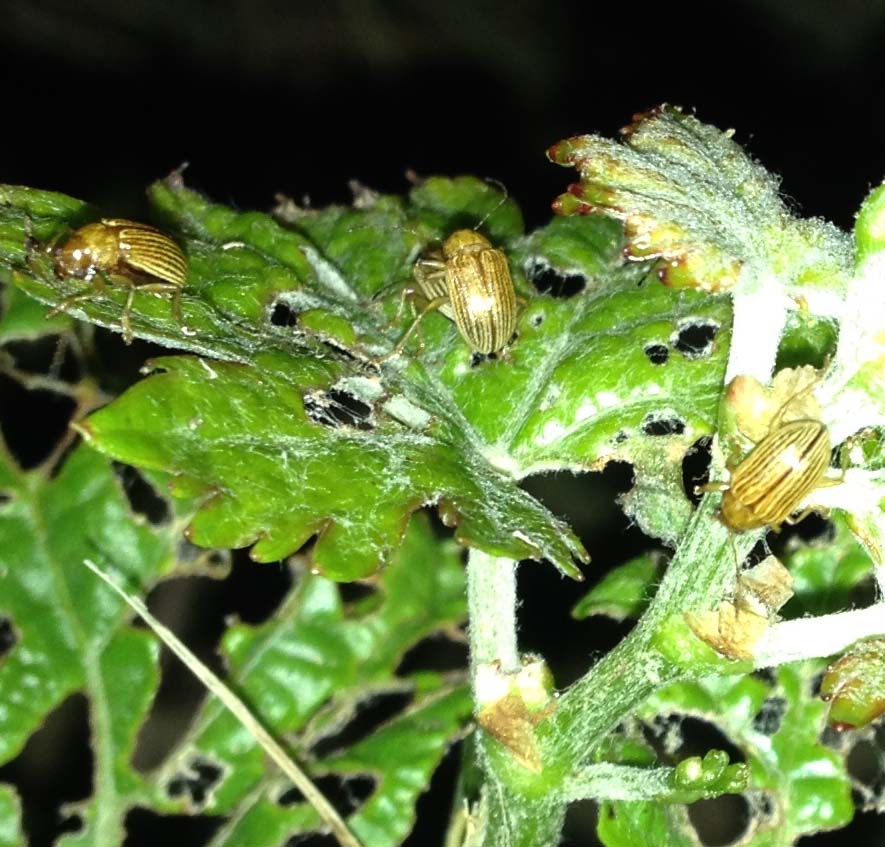
Grape colaspis, Colaspis brunnea (Fabricius)
This is taken primarily from an extension
bulletin by D. G. Pfeiffer & P. B. Schultz, entitled "Major
Insect and Mite Pests of Grape in Virginia" (Va. Coop. Ext. Serv.
444-567 (1986))
This beetle passes the winter in the soil, in
the larval stage. Development is completed in the spring and
adults emerge in June and are present through August. Adult
beetles are light brown, about 5 mm long, with longitudinal rows
of evenly spaced punctures on the elytra, or wing covers. Feeding
marks are elongate oval scars. Damage is usually dispersed, occurs
after foliage is developed, and is considered minor. Besides grape
foliage, grape colaspis adults feed on strawberry, apple and a
variety of vegetable crops. Eggs are deposited in the soil during
summer and fall. Highly creviced soils, such as clay loam, are
preferred. Larvae feed on roots of grasses, clover, soybean, and
rice until cold weather; larvae are not known to feed on grape.
There is one generation per year.
Back to Virginia
Vineyard page
Back to Virginia Fruit
Page
